Make Money While Making It Rain: Check Out the Recent Developments of These Top Perp DEXes
According to the latest on-chain data, the market landscape of decentralized perpetual contract exchanges (Perp DEX) has become relatively clear. In terms of 24-hour trading volume, Aster leads the pack with $121.2 billion, Lighter follows with $86.16 billion in second place, Hyperliquid ranks third with $59.58 billion, while edgeX and ApeX Protocol hold the fourth and fifth positions with $50.6 billion and $21.22 billion, respectively.
The total trading volume of these five platforms exceeds $338 billion, firmly establishing their dominance in the entire Perp DEX track.

For investors and traders looking to delve deeper into the Perp DEX track, focusing on the dynamics of these top five platforms can essentially grasp the direction of the entire track. Therefore, this article from BlockBeats elaborately reviews the recent key developments, product updates, and community activities of these 5 platforms to help readers gain a comprehensive understanding of the latest developments in the current decentralized derivative trading market.
Lighter
1. Insider Leaks Suggest Lighter's Funding Amount is $1.5B.
Recently, an insider who accurately predicted Coinbase's acquisition of Echo and Kalshi's $12 billion valuation hinted in a similar riddle-like manner that Lighter's funding amount has reached $1.5 billion. This news has sparked wide community attention, and although it has not been officially confirmed, the insider's previous accurate predictions have added credibility to this rumor.

From a market performance perspective, prediction data on Polymarket indicates that investors have high expectations for Lighter: 88% probability believes its first-day fully diluted valuation (FDV) will exceed $20 billion, and 55% probability thinks it will surpass $40 billion. Meanwhile, the OTC market price remains stable around $80.

2. Lighter's CEO Hints at Airdrop Node During Major Holiday
Lighter's CEO's latest hint on Twitter has given the community a clearer expectation of the airdrop timing. He explicitly stated that the second-quarter points plan will end before the end of the year, but not on December 31, and tweeted, "the holidays will be lit this year," suggesting an exciting holiday season.
Considering this information, the community generally speculates that the airdrop is most likely to take place during the Western world's most important holiday – Christmas.

Polymarket's data further confirms this expectation, showing that the probability of Lighter completing the airdrop by December 31 is as high as 90%. This means that participants may receive the long-awaited token reward before the end of the year.

3. Lighter Season 2 Rule Adjustment
This month, Lighter announced adjustments to the points distribution rules for the second season compared to the first season. 200,000 points will be distributed every Friday, covering trading activities from Wednesday to the following Tuesday. The allocation mechanism is more diversified, taking into account multiple dimensions such as trading volume, holdings, treasury balance, liquidation and leverage ratios, P&L amounts, and trading categories.
It is worth noting that points and trading metrics do not have a simple linear relationship. For example, double the trading volume may result in triple or 1.5 times the points, as this nonlinear design aims to encourage more diversified trading behavior. The platform has adopted a witch detection system that combines full automation and semi-automation, allowing each user to have up to 10 accounts without penalty, with any excess beyond this limit facing punishment.
For more details, please refer to the official documentation.
4. Tokenomics and Product Roadmap
Two weeks ago, the founder of Lighter conducted a Russian AMA, revealing some key information:
Lighter plans to allocate 25-30% of the tokens for the first and second season's points airdrop, with the community's total allocation reaching 50%. The remaining portion will be used for future airdrops, partner programs, and sponsored projects.
On the product side, the spot trading feature is expected to be launched at the end of October or early November, with the initial listing of core assets such as ETH, BTC, followed by selected meme coins and partner projects.
Roadmap for the Next 6-12 Months: Implement cross-margin functionality by the end of the year, allowing the use of spot as collateral for perpetual contracts; launch EVM "sidecar" smart contract extension early next year; RWA derivatives (precious metals and crypto-related stocks) planned to go live by year-end; options and dark pool functionality set to be released next year and by year-end, respectively.
5. Arbitrage Opportunities
Community user Your Quant Guy shared an Arbitrage Alpha strategy about Lighter, with an annualized return of approximately 51.5%.

6. Data Performance
According to a community-made dashboard website and lighterlytics data, Lighter's data growth is showcased. Lighter's current TVL is 1.15B, with a growth rate of 481% over the past three months.

The 24-hour revenue has reached $598k, indicating high platform trading activity. Liquidity providers dominate, with the Premium Maker market share at 81.9%. The Premium Taker market share is 11.6%.

The top ten traders on Lighter primarily focus on trading ETH and HYPE pairs. The top-ranked trader has a predominant ETH short position, with a total position value of $25.52M, realized profits of $3.21M, 83 trades executed, and holding 20 positions.

Aster
1. Phase Three Airdrop Plan
On October 6, Aster seamlessly transitioned to the Phase Three reward plan "Aster Dawn," which will last for 5 weeks until November 9. This plan introduces an innovative multi-dimensional Rh point scoring system, taking into account factors such as trading volume, holding duration, ASTER ecosystem assets (such as asBNB, USDF), realized gains and losses, and team referral contributions.
Highlights of the Dawn plan include: 4% of the total ASTER supply allocated specifically for the Phase Three airdrop; spot trading incorporated into the scoring system for the first time, no longer limited to perpetual contracts; specific trading pairs (such as AT, AT, AT, ON, etc.) receive a 1.2x point bonus; the team referral standard fee is 10%, with whales able to apply for a higher tier. Scores are recalculated weekly to ensure fairness, with the specific formula kept confidential to prevent wash trading.
The Phase Two rewards were queryable starting on October 10, with withdrawals starting on October 14, and no lock-up period restrictions.
2. Launch of Buyback
In October, Aster officially launched the token buyback plan for Phase Three (S3). After the buyback is completed, the bought-back tokens will be transferred to the same address as the S2 buyback, followed by the commencement of S3 airdrop distribution.

Based on an estimated daily platform fee of $15 million, the market expects the total repurchase amount to exceed $200 million. Several community members and analysts believe that if this buyback plan continues to be executed, it may drive the ASTER price to the $10 target level.
Regarding the buyback analysis, KOL Michael Liu's tweet provides some additional insights and details: There is a significant discount in Aster's current valuation; all KOL-round chips have either been repurchased OTC at the current price or have all been unlocked and highly concentrated; Binance's internal exposure to Aster funding has no limit. These factors together form the bullish fundamental logic.

3. Mobile and AI Trading Competition
The Aster App has officially launched on the iOS App Store and Google Play Store, allowing users to trade anytime, anywhere. This marks a significant milestone for the platform in terms of user experience.
More notably, the launch of the "Aster Vibe Trading Arena" has taken place. This event is aimed at the world's top AI traders and developers, with a total prize pool of 50,000 ASTER tokens. Participants are required to build an automated AI system "Vibe Trader" that can execute live trades through the Aster API. The winning team will also have the opportunity to establish a long-term partnership with Aster.
The competition timeline is as follows: submissions are accepted from October 21st to November 3rd, and the final winners will be announced no later than November 21st. The judging process includes Aster's initial screening, community voting, and the core team's final decision.
In addition, inspired by nof1 (@the_nof1), the MoneySharks project has launched a similar perpetual contract trading competition on Aster involving six large language models, with each starting with 1 BNB (approximately $1100). As of now, all six large language models are in a loss-making state, and the first place, similar to nof1's test results, is deepseek.

Hyperliquid
1. Season 3 on the Horizon
Renowned community member Raccoon Chan (@RaccoonHKG) speculated on the "Season Three November" through clues, indicating that Hyperliquid's third-quarter airdrop plan will be launched in November. This news has excited users who have been actively participating in trading.

2. Significant Achievements of HIP-3 Upgrade
The HIP-3 upgrade activated on October 13 has brought significant changes to the ecosystem. The most prominent success story is trade.xyz and its launch of XYZ100 – a tokenized Nasdaq 100 futures tracking the top 100 non-financial companies in the US. The product saw a trading volume surpassing $35 million on its first day, demonstrating strong market demand.
According to Hyperliquid News: trade.xyz hit a new all-time high in daily trading volume, reaching $77.57 million. It generated $37,789 in revenue within 24 hours, with a total revenue of over $217,000. Based on the current growth trend, some analysts believe that by Christmas, trade.xyz's trading volume will surpass that of the established platform dYdX.

It is worth mentioning that trade.xyz is currently fully open, with only users at the front of the queue able to access it.
3. The Robinhood Effect
After Robinhood launched HYPE on October 23, the token saw a 25% daily price increase. More importantly, there has been sustained buying support. According to arthur.hl (@ArthuronH), Robinhood is currently purchasing approximately $3.7 million worth of HYPE daily, compared to just $2.4 million a few days ago. The net buying rate has even exceeded that of SOL, demonstrating the strong demand for HYPE from traditional financial platforms.

4. HyperEVM Native Protocol
Hyperliquid Daily (@HYPERDailyTK) compiled and summarized the HyperEVM native protocol, showcasing HyperEVM as a key choice for developers spanning from DeFi protocols to innovative applications.

edgeX
1. edgeX24-Hour Revenue Performance Surpasses Hyperliquid
According to Artemis' "Top Chains by Fees" data, edgeX has surpassed Hyperliquid with a 24-hour fee revenue of $2.3 million, establishing itself as the new on-chain fee king. This highlights the platform's high transaction activity and user stickiness.
In terms of bridging fund flows, edgeX ranks second in net inflows over the past 24 hours, only behind Ethereum, demonstrating strong fund attractiveness.

2. TGE Signal Further Clarified

The edgeX official Twitter initiated a widely followed poll: "Preparing something special for the mainnet. If our mascot is Maru (a seal), what should the token symbol be?" This tweet received over 111,000 views and 141 replies within 24 hours, being interpreted by multiple media outlets as a clear signal of the impending TGE.
The edgeX admins further confirmed in the Telegram group that TGE-related matters are progressing as planned. Starting this week, the team will gradually release relevant information and will soon hold community calls and Q&A sessions to ensure users have a comprehensive understanding of the tokenomics and distribution plan.

ApeX
1. Launch of Ape Season 1 Point Airdrop
ApeX officially launched the Season 1 core points program on October 6, marking the start of a nearly three-month large-scale user incentive activity. The program kicked off its warm-up phase on September 29 and will run until December 28, spanning 12 epoch cycles.
Season 1 has set a reward pool of 69 million APE points, with 5.75 million points distributed weekly. Distribution occurs every Wednesday at 8:00 AM UTC based on the previous week's user activity data.
The point acquisition channels include: Trading Volume (60%); Referral System (20%); TVL Treasury (10%); Liquidation Operations (5%); Holding Interest (5%);
Additionally, if you join the ApeX Fleet Team, you will also receive a corresponding bonus multiplier based on the team's weekly trading volume. Users can receive a point multiplier ranging from 1.05x to 1.5x: $5 billion trading volume receives 1.05x, $10 billion receives 1.10x, $30 billion receives 1.15x, $50 billion receives 1.20x, $80 billion receives 1.30x, and the top teams with over $100 billion will enjoy the highest multiplier of 1.5x.
Furthermore, there are several special bonuses: Additional multipliers for deposits via the Mantle Network; Staking APEX tokens for 3-24 months accrues bonuses at different levels; Early participants in the warm-up phase receive a compound coefficient reward as early adopters; Users with historical trading activities on platforms like Hyperliquid, Aster, EdgeX, etc., can also receive the "DEX Pioneer Bonus."
2. Kaito AI Collaboration: $100,000 Creator Support Program
ApeX has partnered with Kaito AI to launch a creator incentive program lasting over two months, with a total prize pool of up to $100,000 USDT. The program runs from October 27 to January 4, 2026, divided into five two-week cycles, rewarding the top 100 creators in each cycle with a single-cycle prize of $20,000.
Creators' rankings are based on a comprehensive score in three dimensions:
Content quality accounts for the highest percentage (50%), covering market analysis, ApeX platform tutorials, trading strategy sharing, DeFi industry discussions, and meme culture content. This means that both in-depth research content and light-hearted creative works have the opportunity to be rewarded.
Social interaction constitutes 30%, mainly considering likes, comments, and retweets on the Twitter platform. This encourages creators to not only produce high-quality content but also actively engage with the community to expand their influence.
Ecosystem value contribution makes up 20%, evaluating the creators' actual role in driving the ApeX ecosystem, such as attracting new users and promoting feature usage.
Of particular note, creators who are also active traders can receive additional bonuses. A weekly trading volume of $500,000 earns a 1.25x point multiplier, while above $2 million, they enjoy a 2x multiplier. Moreover, highly active creators can also receive up to a 30% discount on trading fees.
3. AI Trading Competition
The AI Trading Arena launched on October 20 provides a stage for algorithmic trading enthusiasts to showcase their skills. The competition has set up a prize pool of 25,000 USDT and supports AI trading bots accessed through API/SDK.
The platform provides each participating fund with an initial funding of $5,000 and offers up to 100x leverage.
4. ApeX Trader Club
Targeting platform veteran users, ApeX has introduced the Trader Club program. The program runs from October 17 to November 13, lasting 4 weeks, with a weekly distribution of $2,000 USDT in rewards, totaling $8,000.
The entry requirement is a mandatory 6-month trading volume verification to ensure that members are genuinely active traders. The club takes the form of an exclusive Telegram community, providing a platform for in-depth discussions and information sharing among high-net-worth traders, forming a close-knit community of elite traders.
You may also like
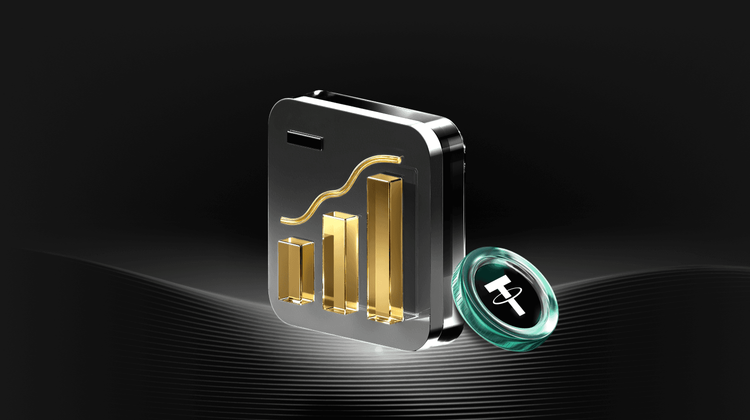
Blockchains Quietly Prepare for Quantum Threat as Bitcoin Debates Timeline
Key Takeaways: Several blockchains, including Ethereum, Solana, and Aptos, are actively preparing for the potential threat posed by…
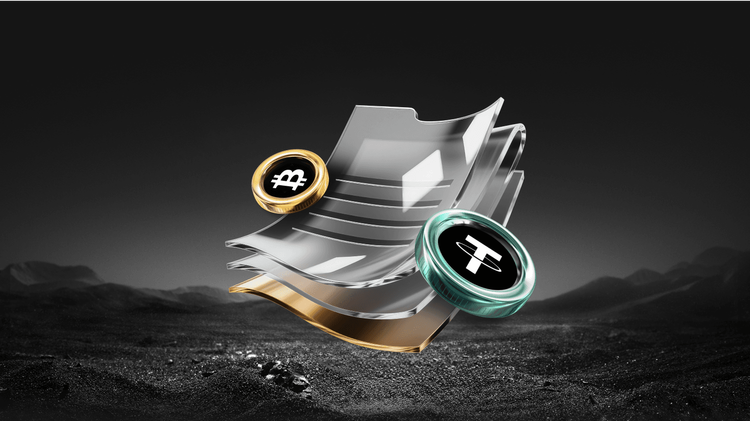
Former SEC Counsel Explains What It Takes to Make RWAs Compliant
Key Takeaways The SEC’s shifting approach is aiding the growth of Real-World Assets (RWAs), but jurisdictional and yield…

Crypto Market Slump Unveils Disparity Between VC Valuations and Market Caps
Key Takeaways Recent market downturns highlight discrepancies between venture capital (VC) valuations of crypto projects and their current…
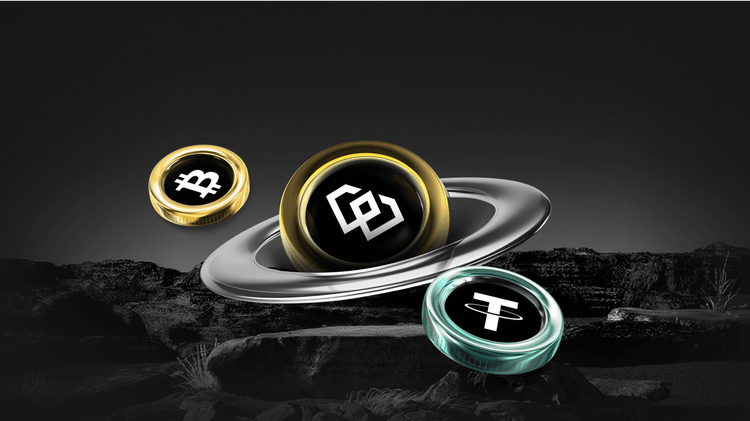
Trump Family-Linked USD1 Stablecoin Gains $150M as Binance Unveils Yield Program
Key Takeaways The USD1 stablecoin, associated with the Trump family, increased its market capitalization by $150 million following…

December 24th Market Key Intelligence, How Much Did You Miss?

Kalshi First Research Report: When Predicting CPI, Crowd Wisdom Beats Wall Street Analysts

The Trillion-Dollar Stablecoin Battle: Binance Decides to Step in Again

Aave Community Governance Drama Escalates, What's the Overseas Crypto Community Talking About Today?

Where Did $362 Million Go? Hyperliquid Counters FUD in Decentralization Showdown
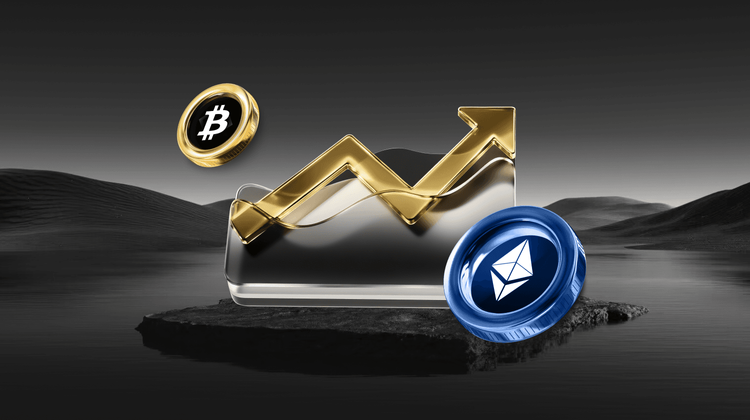
2 Days 20x, How Big Can the Legendary Golden Dog Snowball's "Auto-Compound" Snowball Grow?
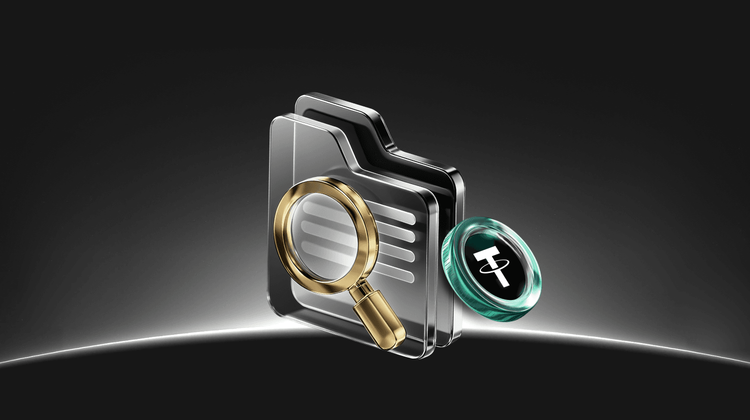
2025 Whale Saga: Mansion Kidnapping, Supply Chain Poisoning, and Billions Liquidated
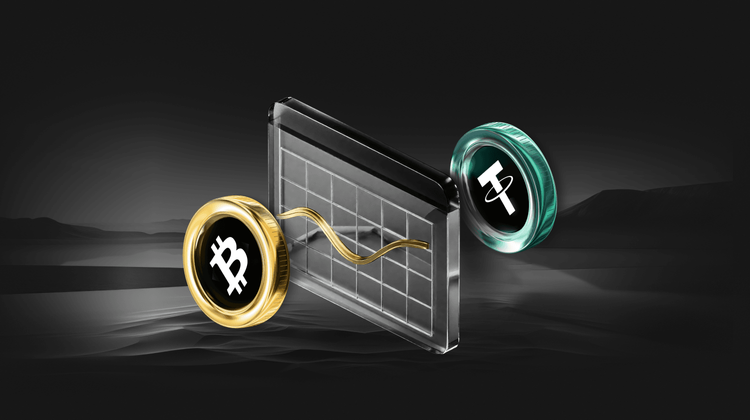
IOSG: From Compute to Intelligence, a Reinforcement Learning-Driven Decentralized AI Investment Map

Coinbase Joins Prediction Market, AAVE Governance Dispute - What's the Overseas Crypto Community Talking About Today?
Over the past 24 hours, the crypto market has shown strong momentum across multiple dimensions. The mainstream discussion has focused on Coinbase's official entry into the prediction market through the acquisition of The Clearing Company, as well as the intense controversy within the AAVE community regarding token incentives and governance rights.
In terms of ecosystem development, Solana has introduced the innovative Kora fee layer aimed at reducing user transaction costs; meanwhile, the Perp DEX competition has intensified, with the showdown between Hyperliquid and Lighter sparking widespread community discussion on the future of decentralized derivatives.
This week, Coinbase announced the acquisition of The Clearing Company, marking another significant move to deepen its presence in this field after last week's announcement of launching a prediction market on its platform.
The Clearing Company's founder, Toni Gemayel, and the team will join Coinbase to jointly drive the development of the prediction market business.
Coinbase's Product Lead, Shan Aggarwal, stated that the growth of the prediction market is still in its early stages and predicts that 2026 will be the breakout year for this field.
The community has reacted positively to this, generally believing that Coinbase's entry will bring significant traffic and compliance advantages to the prediction market. However, this has also sparked discussions about the industry's competitive landscape.
Jai Bhavnani, Founder of Rivalry, commented that for startups, if their product model proves to be successful, industry giants like Coinbase have ample reason to replicate it.
This serves as a reminder to all entrepreneurs in the crypto space that they must build significant moats to withstand competition pressure from these giants.
Regulated prediction market platform Kalshi launched its research arm, Kalshi Research, this week, aimed at opening its internal data to the academic community and researchers to facilitate exploration of prediction market-related topics.
Its inaugural research report highlights Kalshi's outperformance in predicting inflation compared to Wall Street's traditional models. Kalshi co-founder Luana Lopes Lara commented that the power of prediction markets lies in the valuable data they generate, and it is now time to better utilize this data.
Meanwhile, Kalshi announced its support for the BNB Chain (BSC), allowing users to deposit and withdraw BNB and USDT via the BSC network.
This move is seen as a significant step for Kalshi to open its platform to a broader crypto user base, aiming to unlock access to the world's largest prediction market. Furthermore, Kalshi also revealed plans to host the first Prediction Market Summit in 2026 to further drive industry engagement and development.
The AAVE community recently engaged in heated debates around an Aave Improvement Proposal (AIP) titled "AAVE Tokenomics Alignment Phase One - Ownership Governance," aiming to transfer ownership and control of the Aave brand from Aave Labs to Aave DAO.
Aave founder Stani Kulechov publicly stated his intention to vote against the proposal, believing it oversimplifies the complex legal and operational structure, potentially slowing down the development process of core products like Aave V4.
The community's reaction was polarized. Some criticized Stani for adopting a "double standard" in governance and questioned whether his team had siphoned off protocol revenue, while others supported his cautious stance, arguing that significant governance changes require more thorough discussion.
This controversy highlights the tension between the ideal of DAO governance in DeFi projects and the actual power held by core development teams.
Despite governance disputes putting pressure on the AAVE token price, on-chain data shows that Stani Kulechov himself has purchased millions of dollars' worth of AAVE in the past few hours.
Simultaneously, a whale address, 0xDDC4, which had been quiet for 6 months, once again spent 500 ETH (approximately $1.53 million) to purchase 9,629 AAVE tokens. Data indicates that this whale has accumulated nearly 40,000 AAVE over the past year but is currently in an unrealized loss position.
The founder and whale's increased holdings during market volatility were interpreted by some investors as a confidence signal in AAVE's long-term value.
In this week's top article, Morpho Labs' "Curator Explained" detailed the role of "curators" in DeFi.
The article likened curators to asset managers in traditional finance, who design, deploy, and manage on-chain vaults, providing users with a one-click diversified investment portfolio.
Unlike traditional fund managers, DeFi curators execute strategies automatically through non-custodial smart contracts, allowing users to maintain full control of their assets. The article offered a new perspective on the specialization and risk management in the DeFi space.
Another widely circulated article, "Ethereum 2025: From Experiment to Global Infrastructure," provided a comprehensive summary of Ethereum's development over the past year. The article noted that 2025 is a crucial year for Ethereum's transition from an experimental project to global financial infrastructure. Through the Pectra and Fusaka hard forks, Ethereum achieved significant reductions in account abstraction and transaction costs.
Furthermore, the SEC's clarification of Ethereum's "non-securities" nature and the launch of tokenized funds on the Ethereum mainnet by traditional financial giants like JPMorgan marked Ethereum's gaining recognition from mainstream institutions. The article suggested that whether it is the continued growth of DeFi, the thriving L2 ecosystem, or the integration with the AI field, Ethereum's vision as the "world computer" is gradually becoming a reality.
The Solana Foundation engineering team released a fee layer solution called Kora this week.
Kora is a fee relayer and signatory node designed to provide the Solana ecosystem with a more flexible transaction fee payment method. Through Kora, users will be able to achieve gas-free transactions or choose to pay network fees using any stablecoin or SPL token. This innovation is seen as an important step in lowering the barrier of entry for new users and improving Solana network's availability.
Additionally, a deep research report on propAMM (proactive market maker) sparked community interest. The report's data analysis of propAMMs on Solana like HumidiFi indicated that Solana has achieved, or even surpassed, the level of transaction execution quality in traditional finance (TradFi) markets.
For example, on the SOL-USDC trading pair, HumidiFi is able to provide a highly competitive spread for large trades (0.4-1.6 bps), which is already better than the trading slippage of some mid-cap stocks in traditional markets.
Research suggests that propAMM is making the vision of the "Internet Capital Market" a reality, with Solana emerging as the prime venue for all of this to happen.
The competition in the perpetual contract DEX (Perp DEX) space is becoming increasingly heated.
In its latest official article, Hyperliquid has positioned its emerging competitor, Lighter, alongside centralized exchanges like Binance, referring to it as a platform utilizing a centralized sequencer. Hyperliquid emphasizes its transparency advantage of being "fully on-chain, operated by a validator network, and with no hidden state."
The community widely interprets this as Hyperliquid declaring "war" on Lighter. The technical differences between the two platforms have also become a focal point of discussion: Hyperliquid focuses on ultimate on-chain transparency, while Lighter emphasizes achieving "verifiable execution" through zero-knowledge proofs to provide users with a Central Limit Order Book (CLOB)-like trading experience.
This battle over the future direction of decentralized derivatives exchanges is expected to peak in 2026.
Meanwhile, discussions about Lighter's trading fees have surfaced. Some users have pointed out that Lighter charged as much as 81 basis points (0.81%) for a $2 million USD/JPY forex trade, far exceeding the near-zero spreads of traditional forex brokers.
Some argue that Lighter does not follow a B-book model that bets against market makers, instead anchoring its prices to the TradFi market, and the high fees may be related to the current liquidity or market maker balance incentives. Providing a more competitive spread for real-world assets (RWA) in the highly volatile crypto market is a key issue Lighter will need to address in the future.
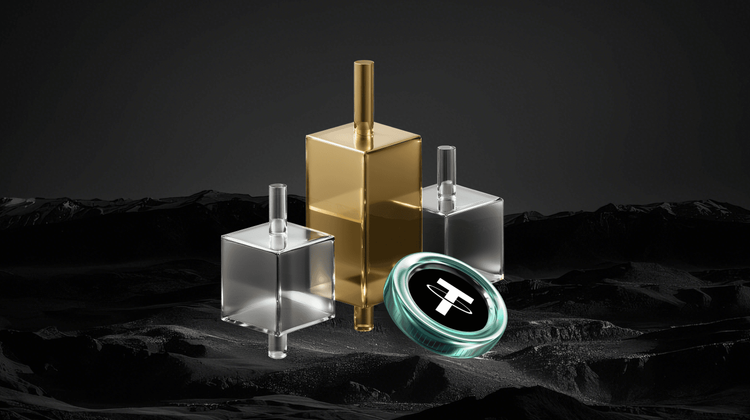
Why Did Market Sentiment Completely Collapse in 2025? Decoding Messari's Ten-Thousand-Word Annual Report

Audiera Sees Massive Price Surge – Key Cryptocurrency Updates
Key Takeaways Audiera (BEAT) has witnessed significant growth, experiencing a 70.10% increase in the past week. Despite the…
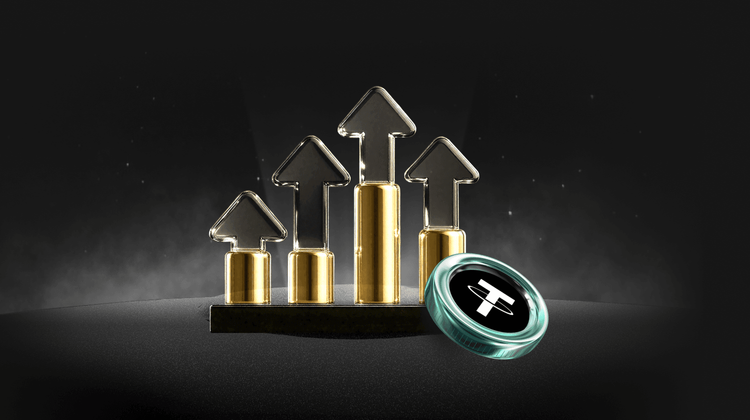
Open Source Achilles' Heel: Nofx and Its 9,000-Star Drama, Forking Fiasco, and Open Source Controversy

Upcoming Lighter TGE: What Is a Reasonable Valuation? As a finance and blockchain translation expert, you are familiar with the field's slang and terminology.

Security Tokenization and Prediction Markets: 7 Major Crypto Boons to Watch in 2026
Blockchains Quietly Prepare for Quantum Threat as Bitcoin Debates Timeline
Key Takeaways: Several blockchains, including Ethereum, Solana, and Aptos, are actively preparing for the potential threat posed by…
Former SEC Counsel Explains What It Takes to Make RWAs Compliant
Key Takeaways The SEC’s shifting approach is aiding the growth of Real-World Assets (RWAs), but jurisdictional and yield…
Crypto Market Slump Unveils Disparity Between VC Valuations and Market Caps
Key Takeaways Recent market downturns highlight discrepancies between venture capital (VC) valuations of crypto projects and their current…
Trump Family-Linked USD1 Stablecoin Gains $150M as Binance Unveils Yield Program
Key Takeaways The USD1 stablecoin, associated with the Trump family, increased its market capitalization by $150 million following…
December 24th Market Key Intelligence, How Much Did You Miss?
Kalshi First Research Report: When Predicting CPI, Crowd Wisdom Beats Wall Street Analysts
Popular coins
Latest Crypto News
Customer Support:@weikecs
Business Cooperation:@weikecs
Quant Trading & MM:bd@weex.com
VIP Services:support@weex.com
